RADICI STORICHE DELLA PATOLOGIA GENERALE FIORENTINA
Prof. Massimo Olivotto
Al
momento della fondazione della Regia Università nell’anno 1924, la
Patologia Generale fiorentina aveva già visto svolgersi un lungo e
prestigioso periodo della sua storia. Questa disciplina era stata
infatti un cardine dell’insegnamento medico offerto da quello che allora
si chiamava Istituto di Studi Superiori di Firenze, ove insegnarono ed
operarono scienziati di fama internazionale, tra i quali, tra il 1886 e
il 1889, Guido Banti, poco prima della sua chiamata alla cattedra di
Anatomia patologica che sarà da lui resa giustamente famosa. Con il
Banti si afferma nell’Ateneo fiorentino l’indirizzo anatomo-clinico
ideato dal Morgagni, che diventerà una pietra miliare della formazione
medica in questo ateneo. Al Banti succedette un personaggio destinato a
dominare la vita scientifica ed accademica per oltre un quarantennio,
Alessandro Lustig. Triestino di nascita e laureato a Vienna nel 1882,
Lustig fu dapprima allievo di Bizzozzero a Torino, dove si fece
apprezzare come direttore del laboratorio del Mauriziano; dopo pochi
anni fu nominato alla cattedra di Patologia Generale di Cagliari e
trasferito nel 1890 a Firenze, dove insegnò fino al 1932, a capo
di una scuola da cui sono usciti gran parte dei più insigni
patologi italiani del secolo scorso (1, 2).
Ebbe grande risonanza come batteriologo ed immunologo e fu autore di
fondamentali lavori sul colera e sulla peste bubbonica, da lui studiata
in India in collaborazione con i suoi allievi Galeotti e Polverini. Tali
studi lo portarono a sperimentare la sieroterapia e la vaccinazione
profilattica con nucleotidi del bacillo pestoso, ottenendo risultati che
gli procurarono grande reputazione internazionale. Tra il 1901 e il
1902 pubblicò il suo magistrale trattato di Patologia Generale (3),
che ebbe successivamente ben nove edizioni e sostituì per lungo tempo
in modo incontrastato le analoghe pubblicazioni straniere; ancora oggi,
questo trattato rappresenta un ausilio prezioso per gli studiosi che
desiderino approfondire i concetti basilari e i confini della Patologia
Generale intesa come indispensabile cerniera tra le discipline
propedeutiche dell’insegnamento medico e la clinica. Nel 1911 fu
nominato Senatore e durante la Grande Guerra del 1915-18 acquisì una
ineguagliata esperienza nella patologia da gas da combattimento.
Notevole fu anche l’impegno sociale del Lustig, esplicato in diverse
circostanze, come quando fu assessore per l’Igiene nel Comune di Firenze
sotto il mandato del suo grande amico Giulio Chiarugi, o come quando
gli venne affidata l’alta Consulenza presso il Comando Supremo per
i servizi militari dell’Esercito italiano.
Particolarmente
fruttuosa fu l’opera del Lustig come maestro e caposcuola. Per
decenni, le migliori cattedre furono occupate da suoi allievi, tra cui
Galeotti, Trambusti, Tiberti, Guerrini, Rondoni, Amato, Vernoni,
Favilli, per nominare solo i titolari di Patologia Generale. A lui si
deve la creazione del primo Istituto universitario costruito a Careggi,
la zona un tempo periferica di Firenze in cui doveva poi sorgere
l’intera Facoltà medica fiorentina. L’Istituto, sorse allora in aperta
campagna in prossimità della Villa Medicea che fu di Cosimo e dove morì
Lorenzo il Magnifico. La costruzione di quest’opera, veramente
innovativa per quei tempi fu iniziata nel 1914 e completata nel 1923,
dopo una lunga interruzione dei lavori dovuta allo scoppio della Prima
Guerra Mondiale del 1915-18. L’intera opera fu finanziata con una legge
votata in Parlamento nel 1913 e ispirata ai più aggiornati criteri
sanitari ed edilizi di una Facoltà medica e la sua rinomanza divenne
ben presto tale da meritare una sua dettagliata illustrazione, come un
esempio di istituto modello, in una pubblicazione edita nel 1928 dalla
Rockefeller Foundation (4) (vedi articolo).
Al
Lustig succedette Francesco Pentimalli, che nel pur breve periodo
(1933-1936) vissuto a Firenze prima del suo trasferimento a Napoli
lasciò una impronta duratura del suo notevole intuito scientifico; a lui
si devono infatti i primi studi sulla trasmissione del sarcoma dei
polli ad opera del virus di Rous (5),
studi che anticiparono un settore destinato ad un tumultuoso sviluppo
negli anni sessanta del secolo scorso con la definizione molecolare dei
meccanismi dell’oncogenesi virale. A Firenze Pentimalli ebbe come
allievi Enrico Ciaranfi e Pietro Caselli, che lo seguirono a Napoli,
dove percorsero la loro carriera accademica fino al raggiungimento della
cattedra di Patologia Generale in sedi importanti.
Dal 1936 al 1958
la cattedra di Patologia Generale di Firenze fu tenuta da Bruno
Borghi, allievo di Rondoni, il grande patologo toscano che per primo in
Italia intuì l’importanza della giovane disciplina biochimica negli
studi medici. Da lui Borghi derivò lo spunto per i suoi interessanti
studi sul metabolismo del tessuto cutaneo (6).
Borghi fu assessore per l’igiene del Comune di Firenze nella giunta
Pieraccini e Rettore dell’Ateneo fiorentino dal 1947 al 1953. Ebbe
allievi destinati a ruoli importanti nella comunità medico-scientifica
fiorentina, come Filippo Pasquinelli, e Angelo La Manna, divenuti in
seguito Primari rispettivamente di Analisi Mediche e di Microbiologia
nell’Arcispedale di S.Maria Nova, Giorgio Marsilii diventato in seguito
Professore ordinario di patologia Generale e Antonino D’Alessandro,
diventato in seguito Professore ordinario di Geriatria e Gerontologia
nella Facoltà Medica Fiorentina.
Nel 1962 alla cattedra di Patologia
Generale, con direzione dell’istituto omonimo, fu chiamato Alberto
Fonnesu, che rimarrà in tale posizione fino al collocamento a riposo e
alla trasformazione dell’istituto in Dipartimento di Patologia e
Oncologia Sperimentali. Laureatosi in Medicina a Perugia, Fonnesu fu,
ancora giovanissimo, allievo di Ciaranfi e con lui si trasferì a Milano,
ereditando dal suo maestro il rigore scientifico e l’apertura mentale
verso i settori della ricerca biomedica che si erano andate
affermando in quegli anni. E’ stato infatti uno dei pochissimi docenti
di Patologia Generale che ha conseguito la Libera Docenza in Chimica
Biologica oltre a quella in Patologia Generale. Importante per la sua
formazione fu il suo soggiorno scientifico (1955) nel Dept. of
Biochemistry della Oxford University, allora diretto da Sir Hans Krebs,
famoso biochimico Premio Nobel per la Medicina. Sul piano sperimentale
Fonnesu ha studiato inizialmente il metabolismo dell’acetato in vivo,
soprattutto in rapporto con lo stato diabetico (chetosi) e
successivamente si è dedicato allo studio delle prime fasi della
risposta cellulare allo stimolo lesivo e alle alterazioni delle
trasformazioni di energia in cellule variamente lese e in cellule
neoplastiche (7-9). Coautore del più diffuso trattato di Patologia Generale dell’epoca (10), ha in seguito diretto, con integrazioni, l’edizione italiana di un analogo testo inglese (11).
Come
allievo di Ciaranfi, Fonnesu riconnette la sua ascendenza accademica al
Pentimalli e al Lustig, di cui emulerà, in un iter accademico
ultraqurantennale, le doti organizzative e l’azione valorizzatrice della
Scuola fiorentina. Socio Naz. dell’Accademia Naz. dei Lincei, è stato
Prorettore sotto i mandati di G. Devoto e C.A. Funaioli, Presidente
della Commissione di Ateneo fino al termine di questo organo accademico;
ha fatto parte a lungo del Comitato Nazionale per la Biomedicina del
CNR, contribuendo in maniera determinante alla istituzione e alla
programmazione dei tre Progetti Finalizzati CNR sui tumori, ai quali si
deve il primo censimento e il reclutamento organico degli oncologi
sperimentali e clinici operanti sull’intero territorio nazionale. Alla
Facoltà Medica di Firenze lascia, come frutto delle sue doti di
realizzatore, le nuove ali dell’edificio che oggi ospita il Dipartimento
di Patologia e Oncologia Sperimentali e il Dipartimento di Scienze
Biochimiche, da lui volute e costruite sotto il suo mandato di
Prorettore, secondo un modello ispirato ai più moderni edifici
scientifico-sperimentali anglosassoni e in armonia con la sua
aspirazione ad una stretta collaborazione tra i due settori
disciplinari.
"Methods and Problems of Medical Education (Tenth Series)"
Division of Medical Education, The Rockfeller Foundation , New York , 1928
Click here for the original article
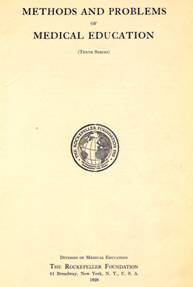

Institute of General Experimental Pathology
Royal University of Florence
by Professor Alessandro Lustig
The Institute of General Experimental Pathology and Bacteriology of the Royal University of Florence was inaugurated in the year 1923, but the construction was begun before the outbreak of the war (1914) which interrupted all building activities. A law issued by Parliament in 1913 provided for the erection in accordance with the latest conceptions of modern sanitary engineering of a medical faculty in the University, including all the biological institutes and some clinics, to be built on an area of some eight hectares in one of the most picturesque and healthy districts in Florence where some small buildings had already been erected for the Hospital of Santa Maria Nuova of Florence. The constructions for the Biological Institute, including the Institute of Hygiene, General Anatomy, and Forensic Medicine, have already been begun, whereas, the Institute of General Pathology is completed. The plans of the other biological institutes have been prepared but have not yet been approved. The building for general pathology covers an area of approximately 1,750 square meters Facing the new hospital square it has an eastern exposure, 45° to the south-ward and a planimetrical formation in the form of a U, with open courtyard to give natural light to the various laboratories. The wings of the building are on one floor, 1,60 meters above the ground and have covered terraces and sunny pavements.
 |
 |
 |
The
center building is of two stories with basement, ground floor, and
entresol used as lodgings for the assisting staff. In the center
building, entrance to which is gained by a wide staircase, are
vestibule, the students' cloack-room, the porters' quarters, the
lecture-room seating 120 pupils, an instrument room for the
demonstrations of microscopic preparations.
In the right wing are the library, the director's study and laboratory, the dark room, the assistants'laboratory, the chemistry room, and a students' laboratory provided with cement and tiled benches.
In the left wing is a room for sterilization, a storeroom for glassware, a room for experimental animals with special tubular constructions in cement to support and isolate the cages of the infected animals, the vivisection room, and a laboratory for the medical students enrolled for the courses.
 |  |  |  |
- Vernoni G. (1936) Commemorazione di Alessandro Lustig. Boll.Ist. Sieroterapico Milanese.
- Dianzani M.U. La medicina torinese dal vitalismo al positivismo. La vittoria del positivismo (In stampa).
- Lustig A. (1901) Patologia Generale, Società Editrice Libraria, Milano
- Lustig A (1928) Institute of General Experimental Pathology Royal University of Florence, in Methods and Problems of Medical Education (Tenth Series), Division of Medical Education, The Rockefeller Foundation, 61 Broadway, New York, U.S.A. 1928 pp 81-88.
- Pentimalli F. (1936). Tumori 10, 14.
- Borghi B. (1940) Giorn.ital.di dermatol.e sifil .81, 415.
- Fonnesu A, Severi C. (1956). Oxidative phosphorylation in mitochondria from livers showing cloudy swelling. J. biophys. biochem.Cytol. 2, 293-299.
- Fonnesu A., Severi C. (1956) The prevention of swelling of liver mitochondria in vitro. Biochem. J. 64, 769-777.
- Fonnesu A. (1960). Changes in energy transformation as an early response to cell injury. In :The biochemical response to injury. Response to injurie (H.B. Stoner & C.J. Thelfall, eds.)Blacwell Sci.Publ., Oxford.
- Favilli G. e coll. Patologia Generale (Varie Edizioni). Casa Editrice ambrosiana C.E.A., Milano.
- Walter J.B.& Israel M.S. Patologia Generale, Edizione Italina coordinata da A.Fonnesu Editoriale Grasso ed., Bologna.
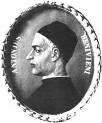
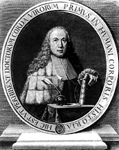
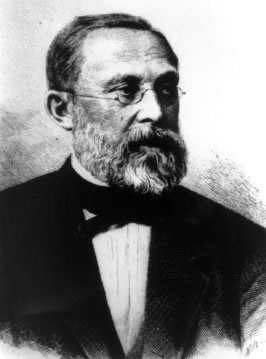

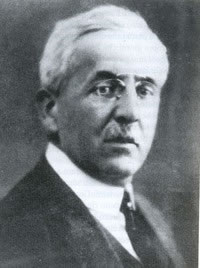
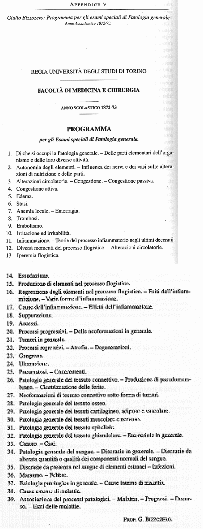
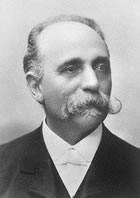
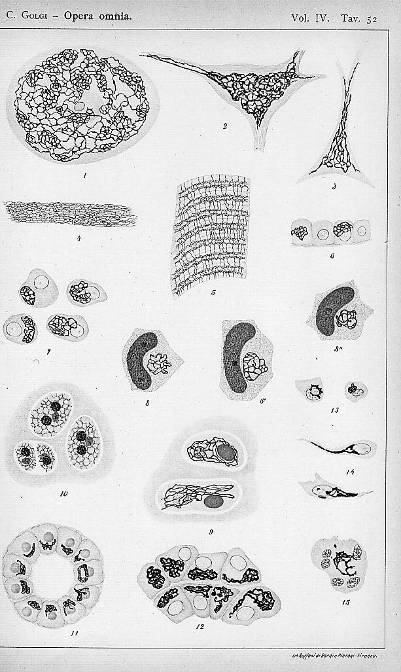
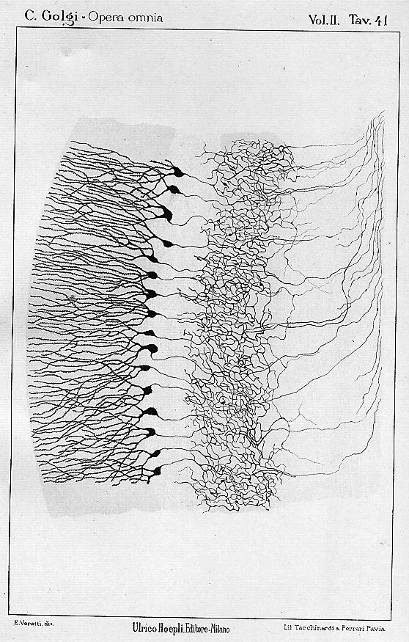
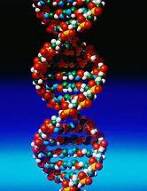 In
the first half of the 20th century, the study of General Pathology
received a great stimulus by the enormous progress of life sciences such
as: Biochemistry, Cellular Biology, Molecular Biology and Microbiology,
Genetics and Immunology, which offered new bases for the study of the
mechanisms of diseases at a molecular level. This event represented a
great stimulus for the growth of General Pathology in Italy. Indeed,
immediately after WWII many Italian researchers, who sensed their
inadequacy in the scientific field due to the well-known Italian
political events, went abroad to be trained in these new disciplines
bringing back into Italy an immense cultural awareness. Thanks to the
advancement of the scientific level of Italian researchers involved in
the study of the mechanism of diseases, the prestige of General
Pathology greatly increased in the curriculum of medical studies in
Italy. In particular, today, General Pathology is considered the most
important pre-clinical discipline that trains students in methodological
reasoning and in the elaboration of all the information derived from
basic sciences which today are essential in medical practice and in
preventive medicine. In addition, General Pathology continues to
represent a sort of archive of medical progress.
In
the first half of the 20th century, the study of General Pathology
received a great stimulus by the enormous progress of life sciences such
as: Biochemistry, Cellular Biology, Molecular Biology and Microbiology,
Genetics and Immunology, which offered new bases for the study of the
mechanisms of diseases at a molecular level. This event represented a
great stimulus for the growth of General Pathology in Italy. Indeed,
immediately after WWII many Italian researchers, who sensed their
inadequacy in the scientific field due to the well-known Italian
political events, went abroad to be trained in these new disciplines
bringing back into Italy an immense cultural awareness. Thanks to the
advancement of the scientific level of Italian researchers involved in
the study of the mechanism of diseases, the prestige of General
Pathology greatly increased in the curriculum of medical studies in
Italy. In particular, today, General Pathology is considered the most
important pre-clinical discipline that trains students in methodological
reasoning and in the elaboration of all the information derived from
basic sciences which today are essential in medical practice and in
preventive medicine. In addition, General Pathology continues to
represent a sort of archive of medical progress.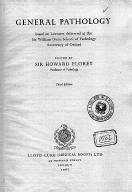 Pathology
has been less prominent in Anglo-American Schools of Medicine, where
General Pathology continues to be considered as an introduction to
Systemic Pathology, rather than a an independent discipline. Of course,
there are several important exceptions, if we consider the unforgettable
Lectures of General Pathology edited by Florey, which included various
classical topics of General Pathology presented by specialists which
worked at Oxford University.
Pathology
has been less prominent in Anglo-American Schools of Medicine, where
General Pathology continues to be considered as an introduction to
Systemic Pathology, rather than a an independent discipline. Of course,
there are several important exceptions, if we consider the unforgettable
Lectures of General Pathology edited by Florey, which included various
classical topics of General Pathology presented by specialists which
worked at Oxford University. 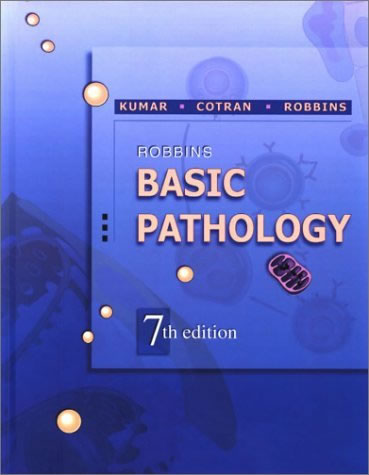 remember
that the General Pathology covered in Cotran and Robbin's textbook,
which reflects the teaching of General Pathology at Harvard University,
has continued to expand in its various editions in these last decades.
remember
that the General Pathology covered in Cotran and Robbin's textbook,
which reflects the teaching of General Pathology at Harvard University,
has continued to expand in its various editions in these last decades.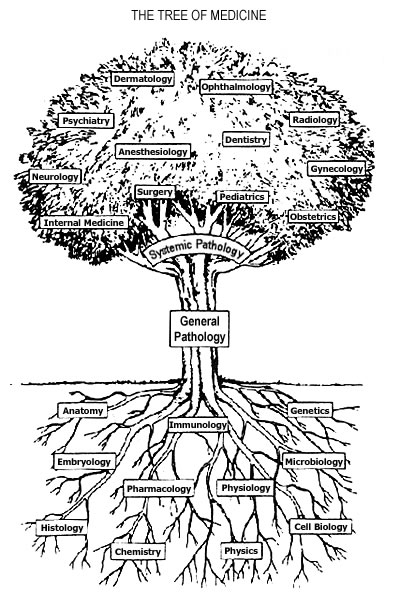
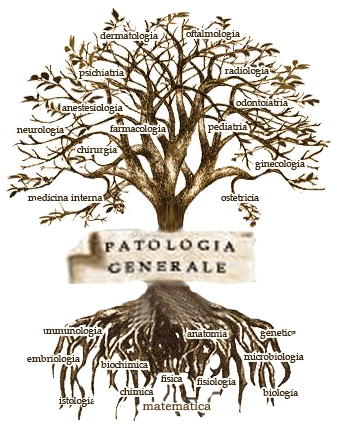 There
is another concern regarding General Pathology, due to the enormous
wave of information derived from the explosion of the studies on
molecular biology. Although some of this information has contributed to
some advancement in Medicine, most do not fit, at least not yet, with a
coherent picture, therefore limiting the medical perspectives.
Furthermore, there is the risk that this information may remain abstract
for the students in their approach toward the complex physiological
phenomena which characterize medical practice. Moreover, the progressive
molecularization of medical knowledge will influence the pedagogic
function of General Pathology which must then preselect those notions of
molecular biology that account for important events in the field of
medicine. This implies that in the future General Pathologists should
wisely revise the whole discipline, in order to preserve the bulk of its
vital function in medicine.
There
is another concern regarding General Pathology, due to the enormous
wave of information derived from the explosion of the studies on
molecular biology. Although some of this information has contributed to
some advancement in Medicine, most do not fit, at least not yet, with a
coherent picture, therefore limiting the medical perspectives.
Furthermore, there is the risk that this information may remain abstract
for the students in their approach toward the complex physiological
phenomena which characterize medical practice. Moreover, the progressive
molecularization of medical knowledge will influence the pedagogic
function of General Pathology which must then preselect those notions of
molecular biology that account for important events in the field of
medicine. This implies that in the future General Pathologists should
wisely revise the whole discipline, in order to preserve the bulk of its
vital function in medicine.